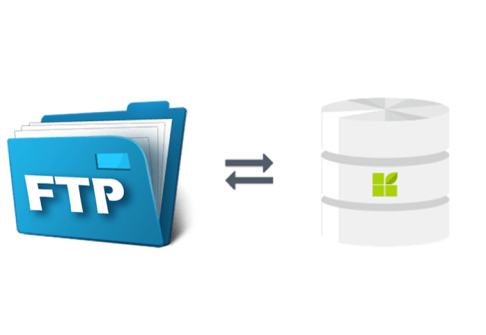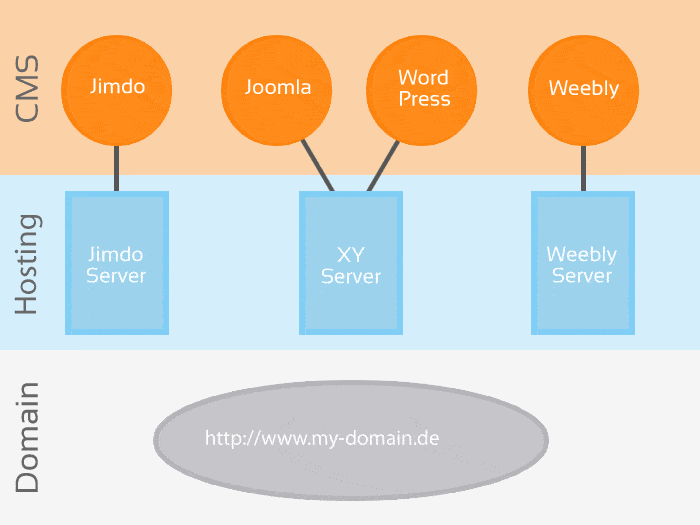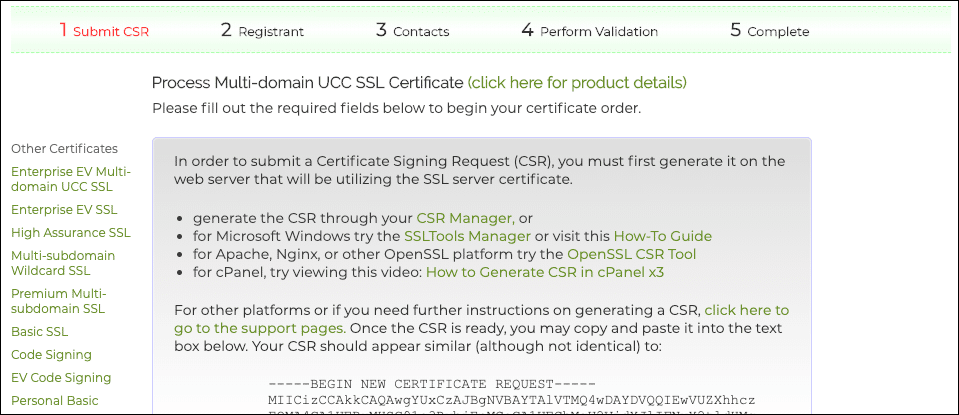
The web hosting cloud has become more popular in the last few years. It's a flexible and affordable option that allows your website to grow with your company. It's also a good choice for websites which experience peaks in traffic and dips, like online marketplaces or eCommerce sites.
Cloud Server Hosting - How It Works
Cloud hosting is the method of providing hosting services through a server farm located at a distance. It is a more reliable hosting system than the traditional one, which hosts sites on a single server. This system allows for a site's traffic to grow as required.
Cloud Hosting: Benefits
Cloud hosting is more secure and scalable than conventional web hosting. Cloud servers are connected to a larger network, which can protect them from cyber-attacks and hardware failures. The scalability of the cloud also allows for a faster response to traffic spikes.

Cloud servers are a great alternative to dedicated physical servers, which can be costly and difficult to maintain. You can instead pay a monthly charge to host your website on a virtual machine in the data center of a cloud service provider.
You can find cloud server for your website which has a range of features. From advanced security for the server to specialized support for CMSes. Cloud servers for WordPress are offered by many providers. It will ensure that your WordPress site is protected from security threats and can run smoothly and quickly without any additional maintenance.
Best Cloud Hosting
Cloud hosting services should be able to grow with your business. This is important if your business has a high traffic volume with many peaks and valleys. You need to have the ability to increase bandwidth when needed to accommodate these traffic peaks.
Cloud hosting can automatically increase your site's bandwidth when needed. This will save you a great deal of time, and allow your site to keep pace with your increasing traffic.

Your website needs to work fast
Users and search engines are becoming more demanding as it comes to page load speed, so a fast site is crucial to your success in the digital world. Cloud hosting services use geo-clustering to place servers as near as possible to the user's location through a network Content Delivery Networks.
Cloud hosting comes in many flavors, but the best can provide all of the tools required to manage your website. These include a control panel that lets you manage your web server through cPanel or Plesk, which makes it easier to keep track of the health of your website and manage its settings. These plans usually include root access as well so that you can take more control of your website's security and health.
FAQ
What HTML and CSS are available to help me build my website?
Yes! If you've read this far, you should now know how to create a website.
After you have learned how to structure a website, you will need to know HTML and CSS.
HTML stands as HyperText Markup Language. Think of it like writing a recipe for a dish. You would list ingredients, directions, etc. Similarly, HTML tells a computer which parts of text appear bold, italicized, underlined, or linked to another part of the document. It is the language used to describe documents.
CSS stands for Cascading Style Sheets. Think of it like a style sheet for recipes. Instead of listing every ingredient and instructions, you create general rules about font sizes, colors, spacing and other details.
HTML tells your browser how to create a web page. CSS tells you how.
If you don't understand either of those terms, don't fret. Follow the tutorials below, and you'll soon be making beautiful websites.
What Should I Include In My Portfolio?
These are the things you should include in your portfolio:
-
Examples of your previous work.
-
If you have one, links to it.
-
You can also find links to your blog.
-
These are links to social media sites.
-
Links to online portfolios of other designers.
-
Any awards that you have received.
-
References.
-
Get samples of your works.
-
Links showing how you communicate with clients.
-
These are links that show you're open to learning new technologies.
-
Here are some links to show you are flexible.
-
You can find links that reflect your personality.
-
Videos showing your skills.
How Much Does it Cost to Create an Ecommerce Website?
This depends on your platform and whether you hire a freelancer or go through a service provider. The average eCommerce site starts at $1,000.
Once you have chosen a platform, expect to pay between $500 and $10,000.
A template is usually less than $5,000 if you plan to use it. This includes any customizations that you might need to suit your brand.
What is a "static website"?
A static website is a site where all content are stored on a server, and visitors can access it via web browsers.
The term "static", refers to the absence or modification of images, video, animations, and so forth.
This site was initially designed for corporate intranets, but it has been adopted by individuals or small businesses who desire simple websites that don't require complex programming.
Static websites are becoming more popular due to their ease of maintenance. Static sites are easier to maintain and update than fully-featured websites with multiple components (such as blogs).
They also tend to load faster than their dynamic counterparts. This makes them ideal for users on mobile devices or those with slow Internet connections.
Additionally, static websites are safer than dynamic sites. It is difficult to hack into static websites. Hackers only have access to the data that resides inside a database.
Two main methods can be used to create a static site:
-
Using a Content Management System.
-
Create a static HTML website
It depends on what your needs are. A CMS is my recommendation if your first website was created.
Why? It gives you full control of your website. A CMS means that you don't have to hire someone to set up your website. You just need to upload files to your web server.
You can still learn code and create static sites. But you'll need to invest some time learning how to program.
What does it mean to be a UI designer
Designers of user interfaces (UI) are responsible for creating interfaces for software products. They design the visual elements and layout of an application. Graphic designers may also be part of the UI designer.
The UI Designer should be a problem solver who understands how people use computers and what makes them tick.
A UI designer must have a passion about technology and software design. He/she must understand all aspects of the field, from developing ideas to implementing those ideas into code.
They should be able use a variety of tools and techniques to create designs. They must be able think creatively and find innovative solutions to problems.
They should be detail-oriented, organized and efficient. They should be capable of quickly and efficiently developing prototypes.
They should feel at ease working with clients, large and small. They must be able to adapt to various situations and environments.
They should be able and willing to communicate effectively with others. They must be able express themselves clearly and concisely.
They should be well-rounded, with strong communication skills.
They should be highly motivated and driven.
They should be passionate about their craft.
What platform is the best to design a site?
WordPress is the best platform available for building a website. WordPress offers all the features needed to make a website professional looking.
It is easy to customize and install themes. You have thousands of options for free themes.
You can also install plugins to increase functionality. They allow you add buttons to social media and form fields, as well as contact pages.
WordPress is very easy to use. You don’t need to know HTML code to edit your theme files. To change your theme files, all you have to do is click on an image and select the desired changes.
There are many options, but WordPress is the best. Millions of people use it every day.
Statistics
- At this point, it's important to note that just because a web trend is current, it doesn't mean it's necessarily right for you.48% of people cite design as the most important factor of a website, (websitebuilderexpert.com)
- It's estimated that chatbots could reduce this by 30%. Gone are the days when chatbots were mere gimmicks – now, they're becoming ever more essential to customer-facing services. (websitebuilderexpert.com)
- The average website user will read about 20% of the text on any given page, so it's crucial to entice them with an appropriate vibe. (websitebuilderexpert.com)
- When choosing your website color scheme, a general rule is to limit yourself to three shades: one primary color (60% of the mix), one secondary color (30%), and one accent color (10%). (wix.com)
- Studies show that 77% of satisfied customers will recommend your business or service to a friend after having a positive experience. (wix.com)
External Links
How To
How to use WordPress in Web Design
WordPress is a free software program that can be used to create websites and blogs. WordPress' main features include an easy installation, powerful theme options and plug-ins. This website builder allows you to customize your site according to your preferences. There are hundreds of themes and plugins available that will help you create any website. If you'd like, you can also add your own domain. All these tools enable you to manage your site's appearance and functionality effortlessly.
WordPress allows you to create beautiful websites even if you don't know how to code HTML. You don't need to know any programming skills to create a professional-looking website. This tutorial will teach you how install WordPress on your computer. Then, we'll go through the steps necessary to put your blog online. We will explain everything so that you can easily follow along at your own pace.
WordPress.com, the most popular CMS (Content Management System), currently has over 25 million users in all of its countries. There are two versions of WordPress. You can choose to either buy a license at $29 per month, or download the source code and host your site for free.
WordPress is often chosen for its blogging platform because of many factors. WordPress is simple to use. Anyone can create great-looking websites by learning HTML. Its flexibility is another benefit. WordPress.org offers many themes for free. This means that you can completely customize the look and feel without spending a dime. You can also customize it. Premium add-ons are available from many developers that allow you automatically to update posts when someone comments, or integrate social networking sharing into your site.